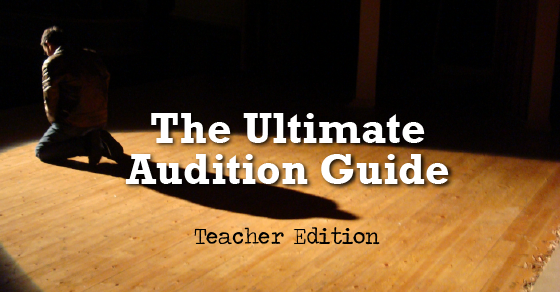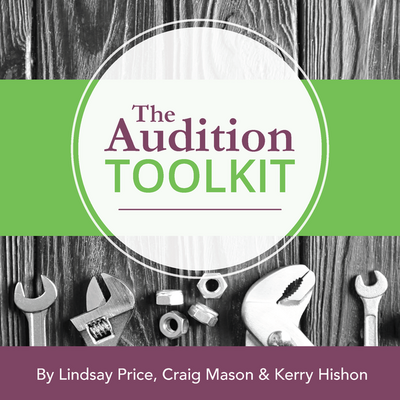Creating Your Audition Toolkit – Songs
In our last post, we talked about creating a monologue notebook to help students collect and reflect on various monologues that could be useful for any upcoming auditions. In this post, we’ll be discussing how students can start their own audition toolkit for musical theatre auditions. This is also a great resource for teachers to have in their classrooms as well!
1. For musical theatre auditions, students will need to start amassing a collection of sheet music. Most musical auditions will require students to sing with an accompanist on piano. Some musical auditions may be performed a cappella (without accompaniment) but it’s good to be prepared.
2. Students need to be sure that their sheet music is actually in the correct key! They can check by plucking out the notes on a piano, or getting a friend to play while they sing. So many students simply sing along to the Broadway cast recording and memorize the words by listening to the songs over and over, but then are shocked to realize that the actual sheet music is written in a different key than what they are used to. Nobody wants to be caught at an audition with a piece in the wrong key – it causes stress for both the person auditioning and for the accompanist who may or may not be willing to sight-read the piece and transpose it to the “correct” key.
3. Students will need to have two binders for musical theatre auditions: a repertoire binder and an audition binder. A repertoire binder holds all the sheet music from every song they’ve ever learned. But don’t bring this to an audition! It’s probably large and unwieldy and difficult for accompanists to turn pages in.
The audition binder should be a one-inch binder containing only the pieces that the student will be performing for that audition. The sheet music should be double-sided (for easy page turning) and clean – no rips or folds in the paper. Some people like to put their sheet music into plastic page protectors. If students go this route, they will want to be sure to invest in good-quality page protectors that do not stick or rip, and do not reflect glare from overhead lights.
4. Repertoire binders should be divided into three sections for the sake of organization: classic musical theatre, modern/contemporary musical theatre, and pop/rock. From there, students may wish to subdivide the sections into up-tempo pieces and ballads. Within the sections, pieces can be organized in alphabetical order or by date of when the piece was published.
5. Where can students find good pieces for musical theatre auditions? By listening to lots of musical theatre recordings and going to see as many shows as possible. Sheet music can be found in music stores, at local libraries, or purchased at websites like MusicNotes.com. Then it’s time for them to practice and see what works for them. Students should try singing along with the recording or getting the sheet music and trying to sing it for themselves. Here are some things to think about when selecting a song for a musical theatre audition:
- Is the sheet music in their range (meaning, is it within the lowest and highest notes they are able to sing)? Do they have to push or strain to get through the song? If not, are they able to transpose the song into an easier key for them to sing?
- Is the song a solo song (one character singing) or a song sung by multiple people? Too often I have heard students trying to use a duet song, sung by two different characters, and make it sound like one person is singing it. It tends to sound weird. There are tons of wonderful solo songs out there – leave the duets and group numbers for fun with friends.
- What is the gender and age of the character singing the song? What is the context of the song within the show? What happened just before the song, to push the action of the song? These are all important for the student to know, to help them make good acting choices while performing their song. Wait – students need to act while they’re singing? Yes indeed! It’s not enough to just sing the song beautifully. Students must show the emotions of the character through their vocal inflections, volume, facial expressions, and physical gestures. Some musical theatre auditions will ask for ONLY a song to be presented (no monologue) and so students need to prove that they can act and sing at the same time!
Related Articles
Audition Toolkit
by Lindsay Price, Craig Mason, and Kerry Hishon
Teach students to present their best selves in an audition situation with The Audition Toolkit - complete with articles, exercises, tips and more for both teachers and students.




